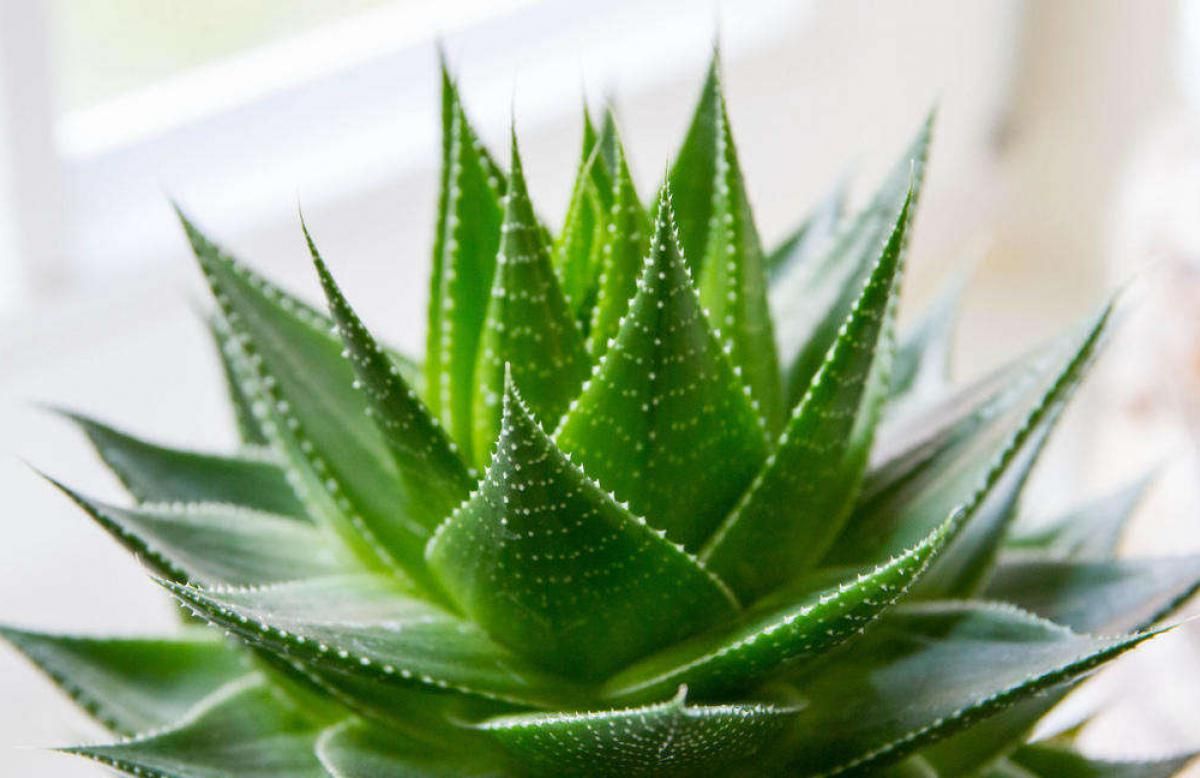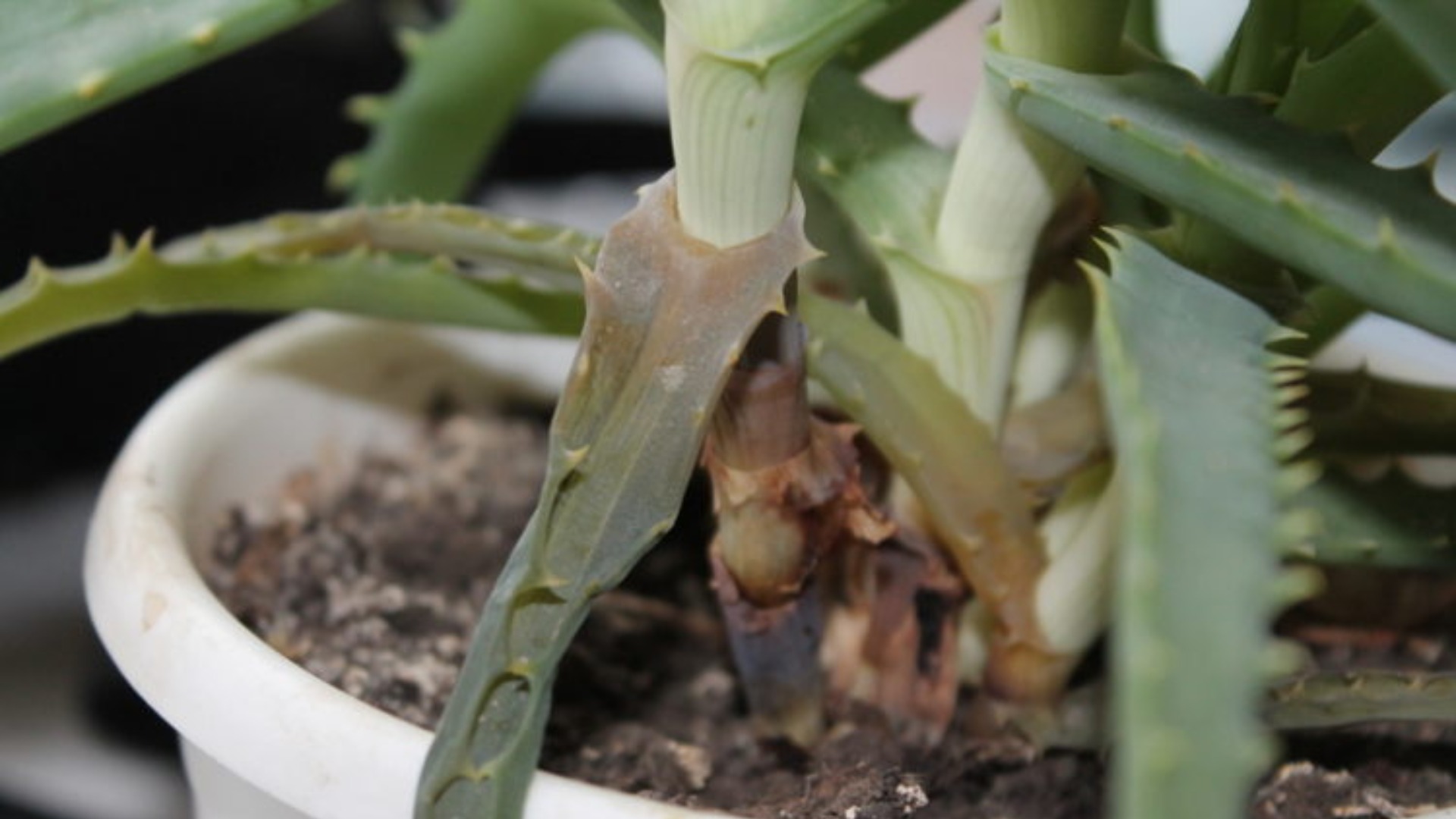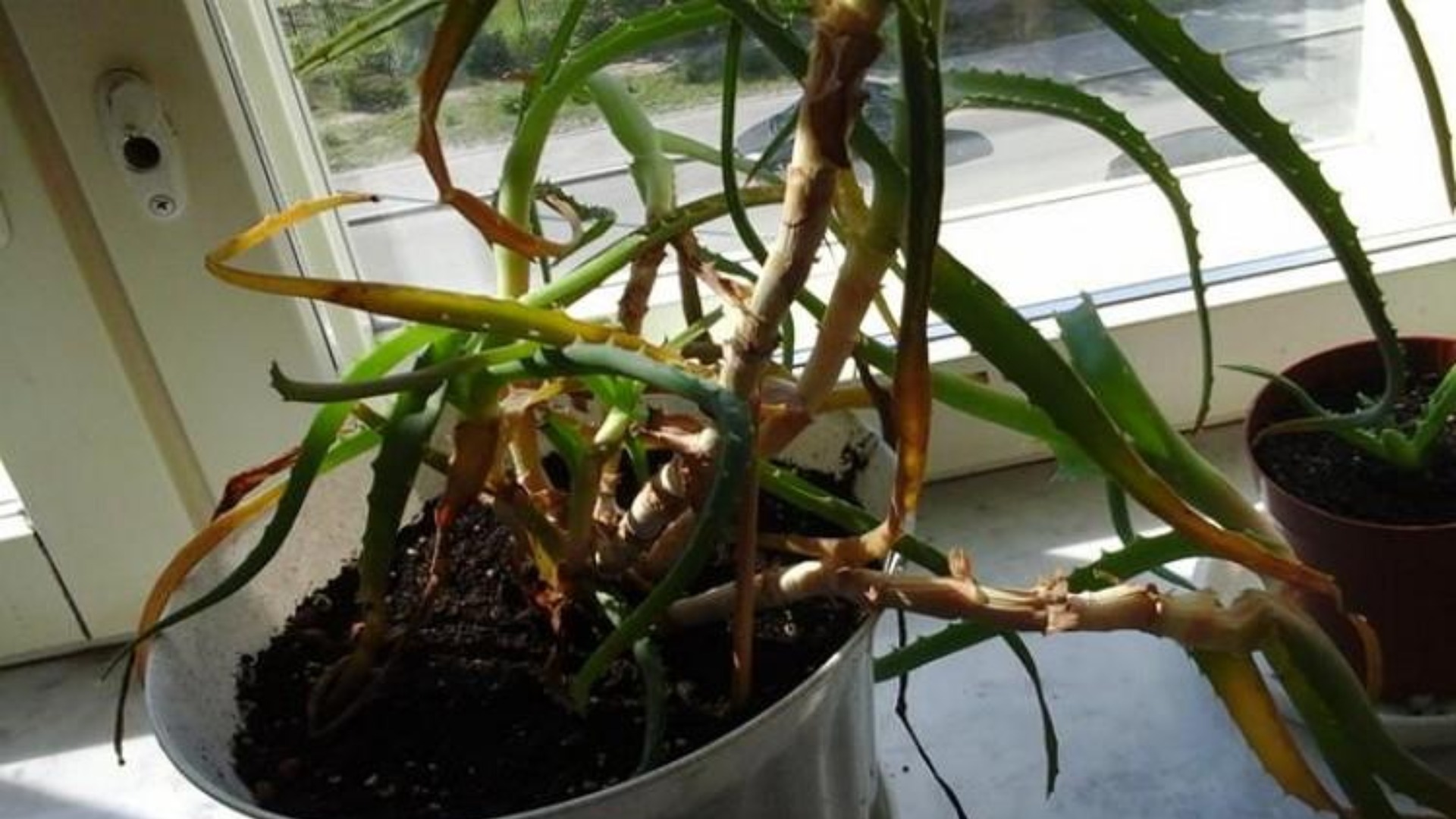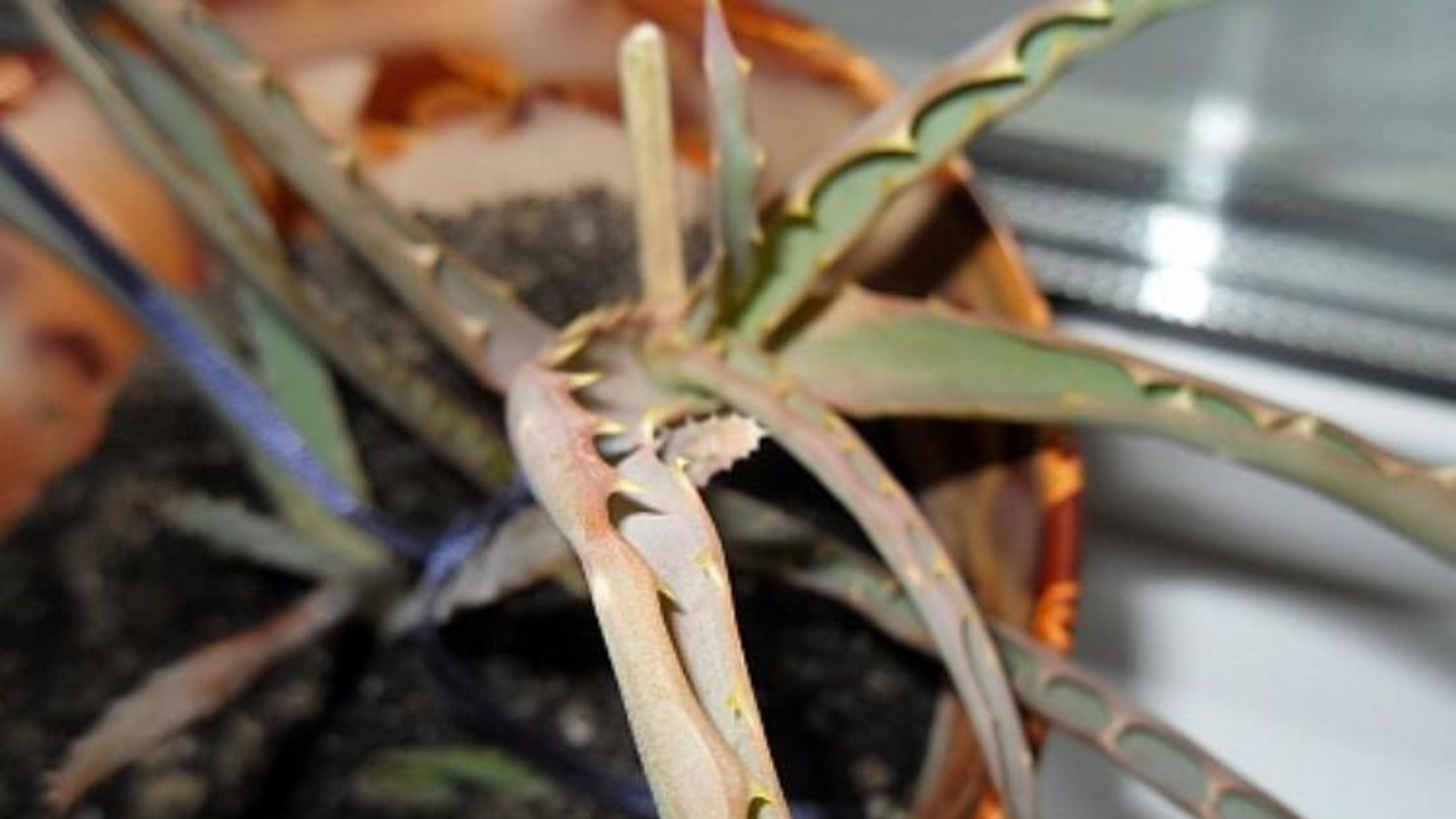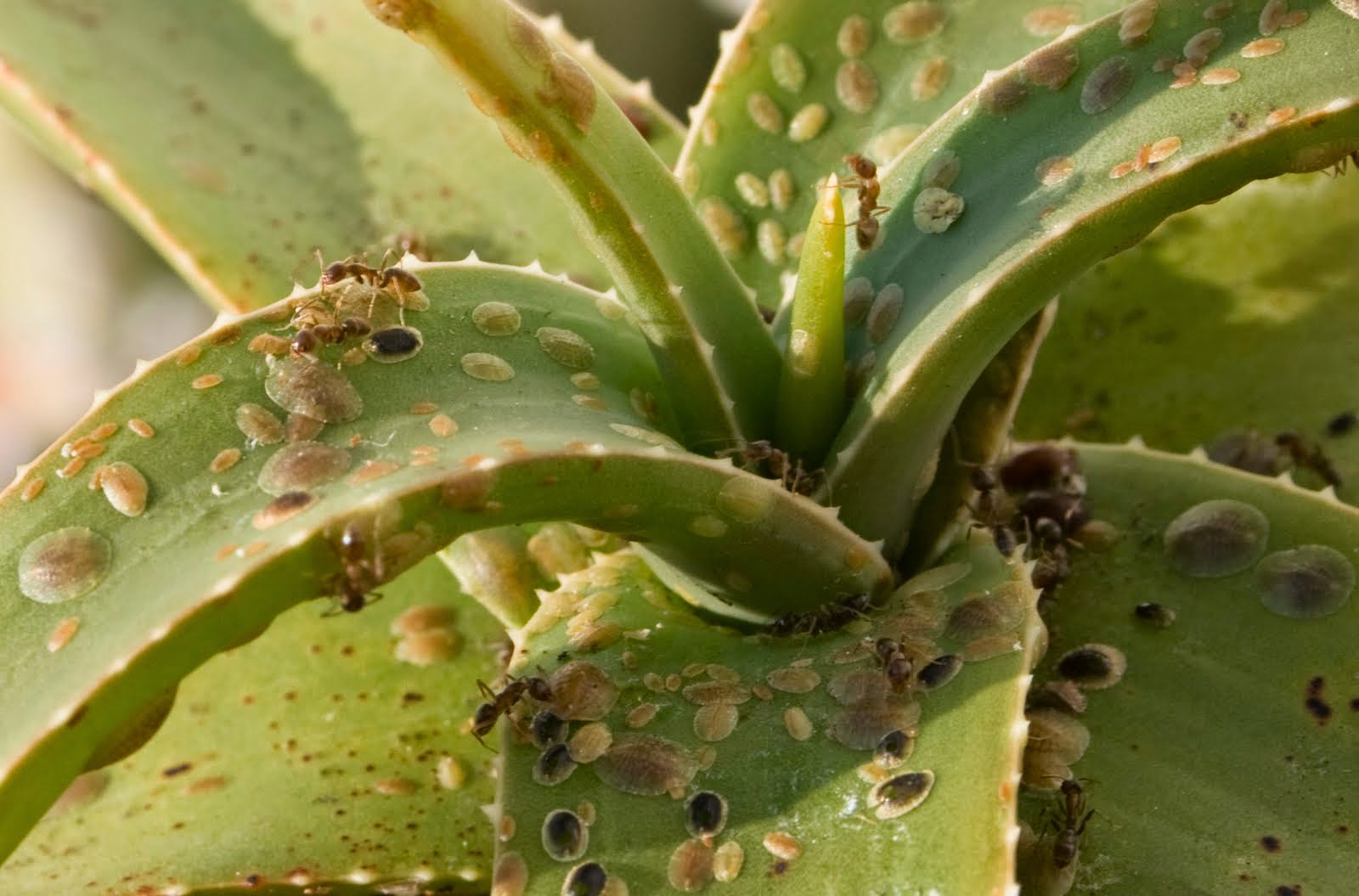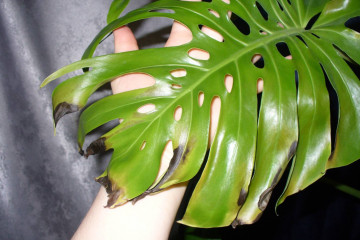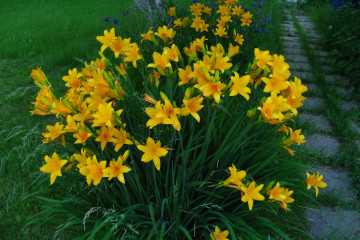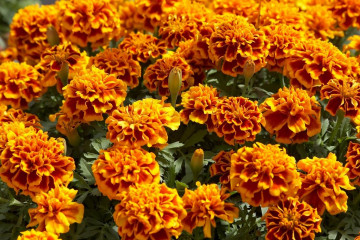Why do aloe leaves turn yellow and leaf tips dry?
Content:
- Why do aloe leaves turn yellow and leaf tips dry?
- Improper care of aloe as one of the causes of dry leaf tips
- Aloe vera diseases affecting leaf health
- Aloe pests as a cause of yellowing and drying of leaves
- What to do with root problems
- How to reanimate a completely dried plant
- How to care for a plant so that there are no problems
Aloe is a succulent that is found in almost every home. The popularity is due not only to unpretentiousness to care, but also to the healing properties, thanks to which the plant is considered a "home doctor". Despite its endurance, there are times when a flower with its appearance signals an existing problem. It is worth considering why aloe leaves turn yellow and what needs to be done to save the plant.
Why do aloe leaves turn yellow and leaf tips dry?
There are many reasons that cause yellowing and drying of aloe leaves. All of them are associated with violation of growing conditions. As a result, the natural immunity of the plant is reduced.
The main provoking factors:
- insufficient lighting;
- inconsistency in temperature conditions;
- long absence of a transplant;
- too large a pot;
- drying out of the roots;
- pests, diseases;
- use of cold water for irrigation;
- lack of nutrients;
- non-compliance with the watering regime.
Problems with leaves can occur in aloe even with a slight violation of the conditions of detention. This is how the plant shows that it needs help. And the sooner the root cause is eliminated, the faster the succulent will recover.
How to save a flower if it dies
Most often, aloe leaves begin to wither against the background of a dysfunction of the root system. This can be caused by a cramped pot, overflow, or drying out. Regardless of the main reason, it is possible to save the plant only with the help of a transplant.
In this case, the damaged roots and leaves are removed and the substrate is completely replaced. The new soil should not only be nutritious, but also contain sand, which will eliminate the likelihood of moisture stagnation.
Improper care of aloe as one of the causes of dry leaf tips
Often the reason why aloe turns yellow is a violation of the conditions of care and maintenance. It is necessary to consider all possible options, since in each case specific signs appear, by which you can determine the problem.
The lower leaves were spotted at the base and fell off
Signs appear as a result of stem decay at the base, which is caused by waterlogging of the soil in combination with a lower temperature of the content. As a result, metabolic processes in tissues are disrupted. As a result, the root rots, and nutrients cease to flow to the top of the plant.
If spots appear on the aloe, namely on the lower leaves, urgent measures should be taken to save the plant. It is necessary to stop the development of rot that spreads up the stem. To do this, take out aloe from the pot, remove all the rotten part to healthy tissue. The slice is dried for 1-2 hours, and then the lower part is powdered with Kornevin.After that, the plant is planted in a soil mixture of peat and sand, taken in equal amounts.
Watering is carried out rarely, in a pan, so that only the bottom layer of the soil is moistened. The next moistening is done after the substrate is completely dry. This regime is observed until the plant fully recovers and grows.
Leaves turn red
If the leaves of aloe turn red and the tips dry, then this is a sign of sunburn. This is how the plant reacts to bright light. Most often this occurs in early spring, when the duration of daylight hours noticeably increases (a plant from partial shade is placed on a windowsill). As a result, the leaves may turn red.
The lower leaves turn yellow
The simultaneous yellowing of several lower leaves can occur for a number of reasons.
If an alarming sign appears in winter, then it indicates the depletion of the flower. This occurs as a result of abundant watering combined with a lack of light. The lower leaves turn yellow, and the top is stretched, the plates become thinner and less fleshy.
Having understood why the leaves of aloe turn yellow, you should figure out what to do. In winter, you should provide a full 12-hour daylight hours using lamps in the evening. If this is not possible, then a cool regime of about +12 ℃ is required and the plant should be kept in practically dry soil, moderately moisturizing once a month.
In the case of yellowing of the lower leaves in summer, there is a lack of nutrients. Long-term absence of transplant or feeding is a common cause. This is how the plant gets rid of old leaves in order to ensure the growth of new ones. To correct the situation, fertilizer is applied for succulents, and if this does not help, then they are transplanted into a new substrate and the pot is enlarged.
Aloe leaves are soft
Loss of leaves can also be caused by various reasons. In hot periods of the year, when the plant is in direct sunlight, this is observed with excessive evaporation of moisture. In this case, the root of the plant is not able to cope with the increased load and make up for the deficiency. To correct the situation, rearrange the plant in a shaded place.
Leaf wilting in aloe can also occur at low temperatures. With a constant mode below +10 ℃, in combination with excessive watering, irreversible processes occur in the tissues of the plant, which leads to the death of the flower. Aloe can withstand a cool microclimate if it is gradually accustomed to the new temperature and watering is limited.
Aloe leaves curl
The symptom may appear as a result of drying out of the roots. This usually happens in winter, when the plant pot is located on the windowsill near the heating appliances. In this case, remove the yellowed leaves, and then rearrange the flower to another place, providing it with frequent but moderate watering.
Aloe leaves can curl when exposed to direct sunlight. The succulent plant tries to protect itself and reduce moisture evaporation. The symptom can appear when dust accumulates on the leaves, which interferes with the process of photosynthesis. It is necessary to regularly wipe the plates, and in hot periods, additionally spray the flower in the evening so that moisture can be absorbed into the leaves until morning.
Aloe vera diseases affecting leaf health
The foliage can also turn yellow due to aloe disease. The most common are root and dry rot. In both cases, there are characteristic signs indicating the disease.
Root rot develops as a result of over-watering, keeping cool, and planting in an inappropriate moisture-retaining substrate. If the plant begins to die, then its leaves completely turn yellow, fall off, the stem at the base becomes dark, and the flower itself bends. Aloe, like other plants, can be saved by transplanting into new soil.
Procedure:
- Get the plant out of the pot, clean it from the ground.
- Examine the roots and remove any suspicious parts.
- Treat the pot with a strong solution of potassium permanganate or boiling water.
- Prepare a soil mixture of sand and peat in equal amounts.
- Lay drainage at the bottom of the pot with a layer of 1-1.5 cm.
- Fill the rest of the space with the prepared substrate.
- Plant aloe in the center of the pot, compact the surface.
- Pour sparsely into the pallet.
Then rearrange the pot with the plant in a shaded place until it is fully restored. Watering is carried out after the substrate has completely dried and only in the pan.
Dry rot appears as irregular pale spots on the leaves of the plant. Subsequently, they grow. With a strong lesion, the growth of aloe slows down, and the general appearance becomes dejected. In this case, the leaves do not fall, and the plant withers. The cause of the development of gray rot is contaminated soil. In this case, it is useless to treat.
Aloe pests as a cause of yellowing and drying of leaves
Aloe leaves can dry and turn yellow as a result of pest damage. This can be determined by a careful examination of the aerial part of the plant.
Possible problems:
- Spider mite. A small insect is difficult to see with the naked eye. The lesion can be identified by the presence of small light dots along the edge of the leaf plate. Subsequently, a thin cobweb also appears on the leaves and stems.
- Thrips. The pest feeds on the sap of the plant, thereby weakening it. The lesion is detected by the presence of black dots on the leaves. In this case, the plates turn yellow and deform.
- Mealybug. The pest is a white insect. With a massive accumulation on the leaves, a cotton-like bloom is noticeable. It propagates in the topsoil and then spreads to the leaves and stem of aloe.
- Shield. The pest is like small, immobile plaques that can be removed with a fingernail. Initially, it is localized along the main stem, and then switches to leaves. Yellow spots appear in these places.
With a small accumulation of pests, you can wash the aloe leaves with soap or garlic solution. In case of mass destruction, chemical agents are used: Aktellik, Fitoverm, Fufanon. Which one to choose, the florist decides for himself, depending on the complexity of the situation.
What to do with root problems
The most dangerous reason that aloe begins to die is a dysfunction of the root system. As a result, not only the leaves may disappear, but the plant itself may rot or dry out.
The main signs of root problems are:
- unpleasant smell near the ground;
- excessive exposure of the succulent at the base;
- stop in development;
- the trunk below begins to blacken, and the leaves disappear;
- the plates become sluggish.
When at least some alarming symptoms appear, measures are taken to save the flower. To do this, take it out of the pot and remove all damaged areas to healthy ones. Then they are washed from the remnants of the contaminated soil and transplanted into another pot and new soil.
How to reanimate a completely dried plant
Florists often ask: if aloe dries up, how to transplant and restore the plant? It is necessary to understand this issue.
With a prolonged absence of watering, the root system ceases to function, and therefore, to feed the leaves. Abundant watering in this case will only accelerate the death of the succulent.
You can save the flower by rooting the top. To do this, cut it off with a clean knife, dry the cut for 1-2 hours. After that, sprinkle with any root former and plant in a mixture of peat and sand in a 1: 1 ratio.
How to care for a plant so that there are no problems
Aloe is an unpretentious plant, but if you ignore the requirements, it begins to wither. Many problems can be avoided if you follow the simple rules of care:
- Aloe needs good lighting, so it is recommended to keep it on a southern or eastern windowsill, shaded from direct sunlight.
- A pot for a plant can be used both clay and plastic, but its diameter should be 2 times smaller than the crown.
- Watering should be carried out as the soil dries into the pallet or along the edge of the pot. To do this, use settled water at room temperature.
- The soil for planting should be purchased with a special mark “For succulents”.
- A flower up to 5 years old is transplanted annually in the spring, and older - once every 3-4 years.
- Top dressing is carried out regularly in the warm season, using fertilizers for succulents. In the autumn-winter period, they are reduced to 1 time per month and the concentration is halved.
- The leaves of the plant are periodically cleaned of dust so that the process of photosynthesis takes place normally.
- In especially hot periods of the year, the leaves are sprayed in the evening.
Aloe is a medicinal succulent that can forgive minor care errors to the grower. With constant violation of the rules of agricultural technology, the plant's immunity decreases, which leads to problems with leaves and roots.
